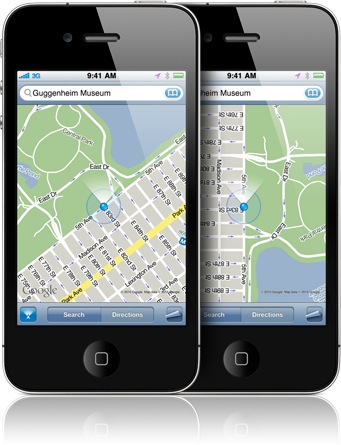I’ve been reading all over the net an interesting roumor. The next iPhone, AKA ‘iPhone 5’, may be released with a new iteration of our beloved OS… iOS 6. But… what goodie could it introduce?.
Well… the biggest idea around, and i’m posting it because i think there is a big chance it’s actually accurate, would be an in-house Maps app. Why i think this?. Because the current Maps App relies heavily on Google. In fact, it wouldn’t do anything useful if it wasn’t for Google.
And as everybody knows, Google and Apple are on trial for Android. So… if i were them, i’d try to take some distance. To begin with, i’d cut the Google Maps app… it’s the obvious move. Let’s see what happens in October!
